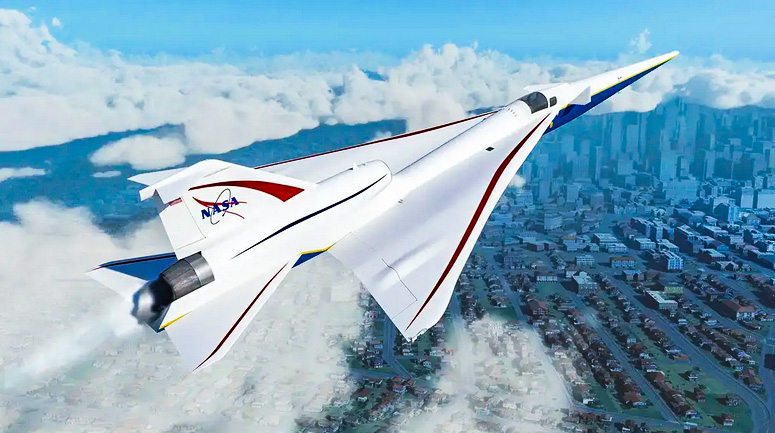A cutting-edge aircraft with the potential to completely change the way we travel at supersonic speeds is the X-59 QueSST, also known as the Quiet Supersonic Transport. This experimental aircraft, created by NASA in partnership with a number of partners, intends to address the problems caused by sonic booms and pave the way for supersonic flights over land. This article will examine the X-59 QueSST program, its cutting-edge technology, its effects on the aviation sector, and its potential for faster, quieter, and more environmentally friendly air travel in the future.
The X-59 QueSST Program:
The X-59 QueSST program, initiated by NASA’s Aeronautics Research Mission Directorate, represents a significant leap forward in aviation technology. Its primary goal is to design an aircraft that produces a softer sonic thump, often referred to as a “sonic thud” or a “gentle sonic thump,” instead of the disruptive sonic boom traditionally associated with supersonic flight.
Supersonic Travel Over Land:
One of the main challenges faced by supersonic air travel is the restriction of flights over populated areas due to the loud sonic boom. The X-59 QueSST aims to overcome this obstacle by demonstrating that supersonic flights can be conducted over land without causing significant noise disturbances. By mitigating sonic booms, this aircraft could open up new possibilities for commercial supersonic travel, potentially reducing travel times between major cities by a substantial margin.
Cutting-Edge Technology:
The X-59 QueSST boasts a range of cutting-edge technologies that contribute to its noise-reduction capabilities. The unique design of the aircraft, featuring a slender fuselage and specially shaped wings, helps manage shockwaves and minimizes the impact of sonic booms on the ground. Additionally, the aircraft’s advanced flight control systems play a crucial role in maintaining stability and precise control during supersonic flight.
Advancements in Aerodynamics:
A key aspect of the X-59 QueSST program involves extensive aerodynamic testing and analysis. Wind tunnel tests and computational simulations have been conducted to optimize the aircraft’s design for efficient supersonic flight. These advancements in aerodynamics not only enhance the aircraft’s performance but also ensure it meets stringent safety standards.
Environmental and Economic Implications:
Beyond its noise-reduction benefits, the X-59 QueSST could also bring positive environmental and economic impacts. By enabling more direct routes and shorter travel times, the aircraft has the potential to reduce fuel consumption and greenhouse gas emissions compared to traditional long-haul flights. Additionally, the prospect of commercial supersonic air travel could stimulate economic growth and job creation in the aviation industry.
Challenges and Future Prospects:
While the X-59 QueSST holds tremendous promise for the future of aviation, it is not without challenges. The development of new aviation technology is complex and demanding, requiring substantial investments and rigorous testing. However, NASA and its partners remain committed to pushing the boundaries of innovation to make supersonic travel a reality.
Conclusion:
The X-59 QueSST program represents a remarkable endeavor to shape the future of supersonic travel. Through its focus on noise reduction, cutting-edge technology, and advancements in aerodynamics, this aircraft has the potential to transform the aviation industry by allowing supersonic flights over land. As research and development continue, the X-59 QueSST paves the way for faster, quieter, and more sustainable air travel, ushering in a new era of aviation innovation.
